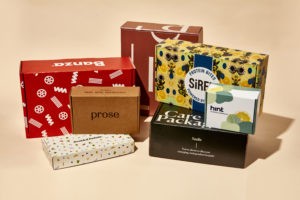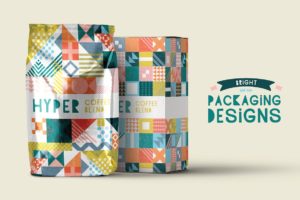
Table of Contents
Ready to unveil your new product? Make a lasting first impression with stunning packaging! Let’s dive into the world of packaging design and discover how to create a knockout first look. We’ll break down the basics and inspire you with creative ideas to get your product noticed and loved.

What is packaging design?
Packaging design is the art of creating the look and feel of a product’s container — it’s like dressing up a product and your brand! But packaging is more than just a pretty box. It’s a holistic approach to creating a product’s external representation. It involves the strategic combination of various elements to introduce a product and a brand, engage consumers, and enhance the overall customer experience.
What are the elements of packaging design?
Magic happens when these elements come together. From a mere product holder, it turns packaging into a powerful marketing tool.
- Structure. Packaging structure, defined by shape, size, and material, serves as the foundation of the entire design. It’s essential to product protection, usability, and creating a visually compelling package.
- Graphics. The visual components that adorn the packaging, such as the logo, typography, and other imagery. This element communicates the brand identity and product information to the consumer.
- Color. Colors can evoke specific emotions and perceptions. Choosing the right one can significantly impact how consumers view your product and brand.
- Brand messaging. The clear and consistent communication of your brand’s values, personality, and unique selling points through your packaging design. This element helps you reinforce your brand identity and connect with your target audience.
What makes a good packaging design?
A good packaging design is:
- Functional. Effective packaging goes beyond good looks. It should protect its contents, open easily, and enhance the user experience. Plus points for packaging that does double duty (we’ll get to that later).
- Visually appealing. In a saturated marketplace, your packaging needs to stand out. Aim for a design that catches the eye and invites a closer look.
- Coherent. Clarity is key in packaging design. Your packaging should quickly convey what the product is and why it’s valuable.
- Versatile. Good packaging designs can flex across different formats and sizes while maintaining brand consistency. It’s about being multifunctional without losing identity.
What’s the importance of good packaging design?
Imagine the packaging world without design — just a sea of monotonous boxes. Here are a few reasons why it matters.
- First impression. Your packaging is your product’s handshake with potential customers. A striking design can stop shoppers in their tracks and spark curiosity.
- Brand recall. A strong packaging design can indelibly imprint your brand on consumers’ minds, increasing the likelihood of repeat purchases and loyalty.
- Storytelling. Effective packaging design is a silent storyteller, conveying your brand’s essence and crucial product details at a glance.
- Differentiation. Don’t let your product get lost in the shuffle. Differentiation is the secret weapon to making your product irresistible to consumers.
How do you design packaging? 
Get started with these steps:
- Identify your packaging’s goal and do your research. Clearly define your goals to ensure your packaging design effectively meets its objectives. Thoroughly research your target audience, product specifications, competitors, and market trends.
- Design and prototype. Bring your packaging vision to life through creative concepts, sketches, and digital designs. Develop prototypes to assess functionality, aesthetics, and overall product fit.
- Test and refine. Seek feedback to identify areas for improvement and make necessary adjustments to optimize the packaging design
- Production. Transform your design into a tangible product by selecting materials, printing, and assembling the packaging.
What are the notable trends in packaging design?
Here’s a roundup of a few packaging design trends you can take inspiration from.
- Sustainable packaging. Puma’s Clever Little Bag is a game-changer in shoe packaging. By ditching some parts of the bulky box and adding a reusable bag as cover, they’ve not only reduced waste but also created a stylish and practical solution. It’s a brilliant example of how to combine sustainability with smart design. Another player in the sustainability packaging game is Boxed Water is Better, who swapped out plastic for plant-based cartons, proving that sustainability is seriously refreshing.
- QR codes. QR codes are changing how brands interact with consumers. Coca-Cola’s Y3000 Zero Sugar limited edition is a perfect example of how to leverage this technology to drive engagement. Their QR code takes you to an AI cam and even shop for merch.
- Minimalism. By stripping away unnecessary details in your packaging, you let your product shine. Apple mastered this with their classic white boxes, proving that sometimes, less is truly more.
- Maximalism. Maximalist design is all about the go big or go home principle, and Jameson’s Deconstructed Series nails it. They’ve created a packaging masterpiece with bold typography and intricate illustrations that tell their brand story and the whiskey’s flavor profile.
- Retro design. There’s something undeniably cool about retro style. It gives products a vintage vibe that screams reliability. Pepsi has nailed bringing back old school vibes with their frequent logo and packaging redesigns.
- Textured packaging. Chobani made their yogurt irresistible by adding texture. Those bumpy labels weren’t just for looks; they created a unique sensory experience that made their product feel extra special
- Personalization. Nutella’s personalized jars are proof that a little customization goes a long way. It’s a fun way to connect with consumers and make them feel like they’re part of the brand.
To wrap it up, packaging design isn’t just about vibrant graphics and fancy fonts. It entails creativity and strategic thinking in stuffing personality, practicality, and persuasion into a box or any container.
Now that you know the basics, create packaging that not only looks amazing but also drives results. Happy designing!




